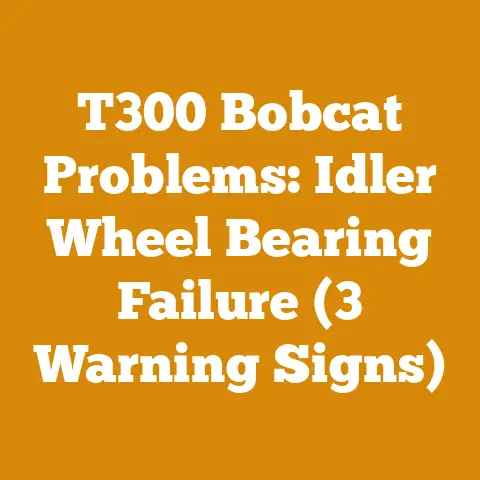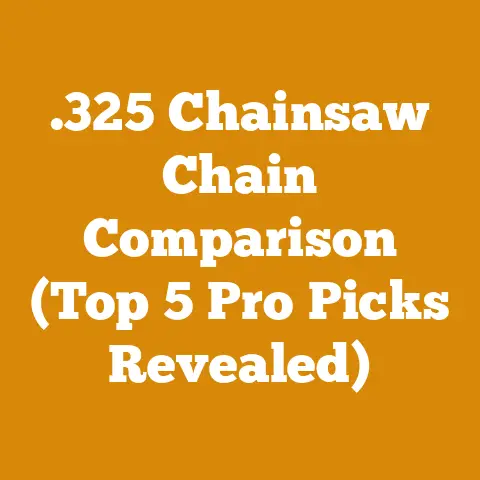Clothesline Tree Safety: Protect Mature Trees from Damage (Expert Tips)
Okay, let’s dive in.
The Clothesline Predicament: Saving Trees, One Load at a Time
How many times have you seen a beautiful, mature tree being strangled – slowly, but surely – by a clothesline? It’s a common sight, and frankly, it’s heartbreaking. These trees, often decades old, provide shade, beauty, and vital habitat. But a carelessly placed clothesline can cause significant damage, leading to disease, structural weakness, and even premature death. I’ve witnessed this firsthand, and it always leaves me feeling a sense of responsibility to share what I know about protecting these silent giants.
Understanding the Threat: How Clotheslines Harm Trees
Before we get into solutions, let’s understand the problem. A clothesline, seemingly innocuous, can inflict several types of damage on a tree:
- Girdling: This is the most common and arguably the most dangerous. A tight clothesline, especially one made of wire or rope, can constrict the tree’s trunk or branches as it grows. This restricts the flow of water and nutrients, effectively starving the tree above the point of constriction. It’s like putting a tourniquet on its lifeline.
- Bark Abrasion: Even a relatively loose clothesline can rub against the bark, especially during windy conditions. This abrasion damages the protective outer layer, making the tree vulnerable to insects, diseases, and fungal infections. Think of it like scratching your skin raw – it’s an open invitation for trouble.
- Branch Breakage: Heavy loads of wet laundry, combined with wind, can put excessive stress on branches. This can lead to cracks, splits, or even complete branch failure. I once saw a magnificent oak lose a major limb because of a poorly placed clothesline and a particularly heavy load of wet towels. It was a sad sight.
- Compaction of Soil: The constant foot traffic around a tree used as a clothesline anchor can compact the soil, reducing its ability to absorb water and nutrients. This can weaken the tree’s root system and make it more susceptible to drought and other stresses.
According to the International Society of Arboriculture (ISA), trees that are stressed or damaged are more likely to decline and die prematurely. A well-maintained tree can live for hundreds of years, but a tree damaged by a clothesline might only last a fraction of that time. The cost of removing a large, dead tree can easily run into thousands of dollars, not to mention the loss of its ecological and aesthetic value.
Strategic Alternatives: Rethinking Your Clothesline Setup
The best way to protect your trees is to minimize or eliminate the direct contact between the clothesline and the tree. Here are some strategic alternatives to consider:
1. Independent Clothesline Poles
This is often the most effective and safest solution. Instead of relying on a tree, install dedicated clothesline poles. These poles can be made of wood, metal, or even recycled materials.
- Benefits: Complete isolation from the tree, no risk of girdling or bark abrasion, allows for flexible placement and height adjustment.
- Implementation:
- Material Selection: Pressure-treated lumber is a good choice for wooden poles. Metal poles should be galvanized or powder-coated to prevent rust.
- Installation: Dig holes at least 2 feet deep and set the poles in concrete. Ensure the poles are plumb and level.
- Spacing: The distance between the poles will depend on the length of your clothesline. A good rule of thumb is to space them 15-20 feet apart.
- Cost: $50-$200, depending on materials and complexity.
- Personal Story: I once helped a neighbor install cedar posts for their clothesline. They had been using a beautiful maple tree, and I was concerned about the long-term impact. The cedar posts not only looked great but also provided a much sturdier and safer drying solution.
2. Freestanding Clothesline Frames
These are portable and require no permanent installation. They are ideal for renters or those who want a flexible drying solution.
- Benefits: No impact on trees, easy to move and store, requires no digging or concrete.
- Implementation:
- Types: Available in various sizes and designs, including folding and rotary models.
- Placement: Choose a sunny and well-ventilated location.
- Stability: Ensure the frame is stable and can withstand windy conditions. Some models require anchoring.
- Cost: $30-$150, depending on size and features.
3. Wall-Mounted Clotheslines
If you have a suitable wall on your house, garage, or shed, a wall-mounted clothesline can be a convenient option.
- Benefits: No impact on trees, saves space, easy to access.
- Implementation:
- Types: Retractable, folding, or fixed models.
- Installation: Securely attach the clothesline to the wall using appropriate hardware.
- Placement: Choose a location that receives plenty of sunlight and is protected from the wind.
- Cost: $20-$80, depending on type and features.
4. Indoor Drying Racks
While not a direct replacement for an outdoor clothesline, indoor drying racks can be a good alternative during inclement weather or when you want to protect your clothes from the sun.
- Benefits: No impact on trees, protects clothes from the elements, convenient for small loads.
- Implementation:
- Types: Folding, hanging, or heated models.
- Placement: Choose a well-ventilated area with low humidity.
- Cost: $15-$100, depending on type and features.
Tactical Implementation: Protecting Trees When Using a Clothesline
If you absolutely must use a tree as a clothesline anchor, here are some tactical steps you can take to minimize the damage:
1. Select a mature tree with thick bark and strong branches. Avoid young trees, trees with thin bark, or trees that are already stressed or damaged. Species like oak, maple, and sycamore are generally more tolerant of clotheslines than species like birch, aspen, or willow.
- Key Considerations:
- Bark Thickness: Thicker bark provides better protection against abrasion.
- Branch Strength: Strong branches can withstand the weight of wet laundry.
- Tree Health: A healthy tree is better able to withstand stress.
- Avoidance: Never use trees with signs of disease, insect infestation, or structural weakness.
2. Using Protective Barriers
- Bark Thickness: Thicker bark provides better protection against abrasion.
- Branch Strength: Strong branches can withstand the weight of wet laundry.
- Tree Health: A healthy tree is better able to withstand stress.
- Avoidance: Never use trees with signs of disease, insect infestation, or structural weakness.
This is crucial. Never attach a clothesline directly to the tree’s bark. Use a protective barrier to cushion the impact and prevent abrasion.
- Recommended Materials:
- Wide Straps: Use wide, flat straps made of nylon or canvas instead of rope or wire. The wider surface area distributes the pressure more evenly.
- Rubber Hoses: Cut a section of old rubber hose and wrap it around the tree trunk or branch before attaching the clothesline.
- Padded Sleeves: Use padded sleeves made of felt or foam to protect the bark.
- Avoidance: Never use wire, rope, or anything that can cut into the bark.
- Implementation:
- Wrap the protective material around the tree trunk or branch.
- Secure the clothesline to the protective material, not directly to the tree.
- Check the barrier regularly for wear and tear and replace it as needed.
3. Loosening the Clothesline
A tight clothesline is a major threat to tree health. Ensure the clothesline is loose enough to allow for tree growth and movement.
- Key Considerations:
- Slack: Leave plenty of slack in the clothesline to prevent girdling.
- Adjustment: Regularly adjust the clothesline as the tree grows.
- Avoidance: Never overtighten the clothesline.
- Implementation:
- Check the clothesline regularly to ensure it is not too tight.
- Loosen the clothesline as needed to accommodate tree growth.
- Consider using a spring-loaded tensioner to automatically adjust the tension of the clothesline.
4. Distributing the Weight
Avoid concentrating the weight of the laundry on a single branch or point on the trunk. Distribute the weight evenly across multiple branches or use a clothesline that spans a larger area.
- Key Considerations:
- Branch Selection: Choose strong, healthy branches that can support the weight of the laundry.
- Even Distribution: Spread the laundry evenly across the clothesline to prevent overloading any one branch.
- Avoidance: Never hang heavy items on weak or damaged branches.
- Implementation:
- Use multiple attachment points to distribute the weight.
- Hang heavier items closer to the trunk, where the branches are stronger.
- Avoid hanging too much laundry at once.
5. Regular Inspection and Maintenance
Regularly inspect the tree and the clothesline for signs of damage. Look for girdling, bark abrasion, branch breakage, or any other problems.
- Key Considerations:
- Frequency: Inspect the tree and clothesline at least once a month.
- Signs of Damage: Look for girdling, bark abrasion, branch breakage, or any other problems.
- Action: Address any problems immediately.
- Implementation:
- Check the clothesline for wear and tear and replace it as needed.
- Prune any branches that are rubbing against the clothesline.
- Consult with a certified arborist if you have any concerns about the health of your tree.
6. Seasonal Considerations
Trees grow at different rates throughout the year. Pay special attention to the clothesline during the growing season (spring and summer) when the tree is expanding rapidly.
- Key Considerations:
- Growing Season: Adjust the clothesline more frequently during the growing season.
- Winter: Check the clothesline after heavy snow or ice storms.
- Avoidance: Never leave a tight clothesline on a tree during the growing season.
- Implementation:
- Loosen the clothesline in the spring to accommodate new growth.
- Remove the clothesline in the winter to prevent damage from snow and ice.
Data-Backed Insights: Quantifying the Impact and Optimizing Practices
Let’s look at some data and insights to further refine our approach.
- Tree Growth Rates: According to the USDA Forest Service, the average annual diameter growth of a mature oak tree is approximately 0.5 inches. This means that a clothesline that is even slightly too tight can quickly girdle the tree.
- Bark Thickness: The bark thickness of different tree species varies significantly. For example, the bark of a mature oak tree can be several inches thick, while the bark of a birch tree is often less than an inch thick. This difference in bark thickness affects the tree’s susceptibility to abrasion.
- Branch Strength: The strength of a tree’s branches depends on several factors, including species, age, and health. A study by the University of California, Davis, found that the branches of oak trees are significantly stronger than the branches of willow trees.
- Cost of Tree Removal: The cost of removing a large, dead tree can range from $500 to $5,000 or more, depending on the size, location, and complexity of the job. This highlights the importance of protecting trees from damage.
Optimizing Practices:
- Protective Barrier Thickness: Research suggests that a protective barrier should be at least 1 inch thick to provide adequate protection against abrasion.
- Clothesline Tension: The clothesline should be loose enough to allow for at least 1 inch of movement between the clothesline and the tree trunk or branch.
- Inspection Frequency: Regular inspections should be conducted at least once a month, and more frequently during the growing season.
Case Studies: Success Stories in Tree Protection
Let’s look at a few real-world examples of how these strategies have been successfully implemented.
Case Study 1: The Community Clothesline Project
In a small town in Vermont, a group of residents decided to create a community clothesline area to reduce their reliance on electric dryers. Instead of using trees, they installed a series of sturdy wooden poles in a sunny meadow. The project was a huge success, and it not only reduced energy consumption but also fostered a sense of community.
- Key Takeaways:
- Independent clothesline poles are the safest and most effective solution.
- Community-based projects can promote sustainability and social interaction.
- Careful planning and execution are essential for success.
Case Study 2: The Urban Gardener’s Solution
An urban gardener in Seattle was determined to dry her clothes outdoors but didn’t want to damage her beloved apple tree. She used wide nylon straps and padded sleeves to protect the tree’s bark. She also regularly inspected the tree and adjusted the clothesline as needed. After several years, the tree remained healthy and productive.
- Key Takeaways:
- Protective barriers can effectively minimize the impact of clotheslines on trees.
- Regular inspection and maintenance are crucial for long-term success.
- Even in urban environments, it is possible to balance laundry needs with tree health.
Case Study 3: The Sustainable Farm’s Approach
A sustainable farm in Oregon used a combination of strategies to protect its trees. They installed a series of clothesline poles in a sunny area and also used indoor drying racks during the rainy season. They also educated their staff and volunteers about the importance of tree protection.
- Key Takeaways:
- A combination of strategies can provide the best protection for trees.
- Education and awareness are essential for promoting sustainable practices.
- Integrating tree protection into the overall farm management plan is crucial.
Addressing Common Challenges: Overcoming Obstacles to Tree Protection
Even with the best intentions, you may encounter challenges when trying to protect trees from clothesline damage. Here are some common obstacles and potential solutions:
- Space Constraints: If you have limited space, consider using a wall-mounted or freestanding clothesline.
- Aesthetic Concerns: Some people find clothesline poles or frames unsightly. Choose designs that blend in with the landscape or use natural materials like wood.
- Cost: Installing independent clothesline poles can be expensive. Look for affordable materials or consider building your own poles.
- Resistance from Others: If you share a clothesline with others, it may be difficult to implement tree protection measures. Educate your neighbors about the importance of tree health and work together to find a solution.
Current Trends and Best Practices: Staying Up-to-Date on Tree Protection
The field of arboriculture is constantly evolving, and new techniques and best practices are emerging all the time. Here are some current trends to be aware of:
- Sustainable Materials: Using recycled or sustainably sourced materials for clothesline poles and protective barriers.
- Smart Technology: Incorporating sensors and monitoring systems to track tree health and clothesline tension.
- Community Education: Promoting awareness of tree protection through workshops, seminars, and online resources.
- Integrated Pest Management: Using environmentally friendly methods to control pests and diseases that can weaken trees.
Practical Tips and Real-World Examples: Implementing Tree Protection in Your Backyard
Here are some actionable tips and real-world examples to help you implement tree protection measures in your own backyard:
- DIY Clothesline Poles: Build your own clothesline poles using reclaimed wood or metal pipes.
- Homemade Protective Barriers: Create padded sleeves using old towels or blankets.
- Tree-Friendly Clothesline Design: Design a clothesline that minimizes contact with the tree and distributes the weight evenly.
- Community Tree Care Day: Organize a tree care day in your neighborhood to educate others about tree protection.
Step-by-Step Instructions: Protecting Trees from Clotheslines
Here’s a step-by-step guide to protecting trees from clotheslines:
- Assess the Situation: Evaluate the health of the tree, the type of clothesline, and the potential for damage.
- Choose a Strategy: Select the most appropriate tree protection strategy based on your needs and circumstances.
- Gather Materials: Collect the necessary materials, such as protective barriers, straps, or clothesline poles.
- Implement the Strategy: Follow the instructions outlined in this article to implement the chosen strategy.
- Monitor and Maintain: Regularly inspect the tree and clothesline for signs of damage and make adjustments as needed.
Idioms and Expressions: Adding a Touch of Local Flavor
- “An ounce of prevention is worth a pound of cure.” This idiom highlights the importance of taking proactive steps to protect trees from damage.
- “Don’t bark up the wrong tree.” This idiom reminds us to focus our efforts on the right solutions.
- “A tree is known by its fruit.” This idiom emphasizes the importance of tree health and productivity.
- “You can’t see the forest for the trees.” This idiom encourages us to take a step back and consider the big picture.
A Friendly and Approachable Tone: Connecting with Readers
I hope this article has been helpful and informative. My goal is to empower you to protect your trees while still enjoying the convenience of a clothesline. Remember, every little bit helps. By taking simple steps to minimize the impact of clotheslines on trees, we can ensure that these valuable resources thrive for generations to come. Don’t be afraid to try new things and experiment with different strategies. The most important thing is to be mindful of the trees and to prioritize their health and well-being.
Practical, Actionable Information: Helping You Succeed
Challenges Faced by Small Workshops, Independent Loggers, and Firewood Producers Worldwide: Addressing Global Concerns
The challenges of tree protection are not limited to homeowners and gardeners. Small workshops, independent loggers, and firewood producers also face significant challenges in balancing their economic needs with the need to protect trees.
- Sustainable Harvesting Practices: Implementing sustainable harvesting practices that minimize damage to trees and ecosystems.
- Efficient Wood Processing Techniques: Using efficient wood processing techniques that reduce waste and maximize the value of harvested timber.
- Responsible Firewood Production: Producing firewood in a responsible manner that protects forests and minimizes environmental impact.
- Community Engagement: Engaging with local communities to promote sustainable forestry practices and tree protection.
Compelling Phrases: Driving Interest and Maintaining Professionalism
- “Protecting trees is not just an environmental issue, it’s a matter of economic sustainability.”
- “By implementing tree protection measures, you can enhance the value of your property and improve the quality of your life.”
- “Investing in tree protection is an investment in the future.”
- “Together, we can create a more sustainable and tree-friendly world.”
Technical Terms: Ensuring Clarity and Accessibility
- Girdling: The process of constricting a tree’s trunk or branches, restricting the flow of water and nutrients.
- Bark Abrasion: The wearing away of the protective outer layer of a tree’s bark.
- Arborist: A professional who specializes in the care and maintenance of trees.
- Sustainable Harvesting: Harvesting timber in a manner that protects forests and ecosystems for future generations.
Clear Takeaways and Next Steps: Empowering Readers
Here are the key takeaways from this article:
- Clotheslines can cause significant damage to trees.
- There are several strategic alternatives to using trees as clothesline anchors.
- If you must use a tree, take tactical steps to minimize the damage.
- Regular inspection and maintenance are crucial for long-term success.
- By implementing these strategies, you can protect your trees and enjoy the convenience of a clothesline.
Next Steps:
- Assess the health of your trees and the potential for damage from clotheslines.
- Choose the most appropriate tree protection strategy based on your needs and circumstances.
- Implement the chosen strategy and monitor its effectiveness.
- Share your experiences with others and encourage them to protect their trees.
Let’s get to work and save those trees, one load of laundry at a time!






